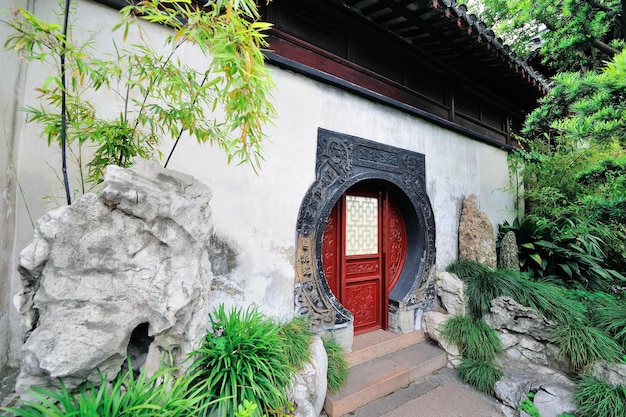The Evolution of Door Handles in Asian Architecture
The Evolution of Door Handles in Asian Architecture: A Journey Through Time and Culture

- Anthony Arphan
- 4 min read

In the rich tapestry of Eastern architectural heritage lies a narrative thread intertwined with the evolution of mechanisms used to access enclosed spaces. Across millennia, the devices facilitating entry and exit have undergone intricate metamorphoses, adapting to cultural shifts and technological advancements. This exploration delves into the labyrinthine corridors of innovation and cultural significance, where instruments of ingress and egress have transcended mere functionality to embody cultural ethos and craftsmanship.
Embarking upon this historical journey unveils a mosaic of ingenious contraptions, each imbued with uniquely regional sensibilities. From rudimentary levers ingeniously crafted to intricate mechanisms integrated seamlessly into architectural splendor, these manipulators not only opened physical portals but also served as symbolic thresholds, marking transitions from mundane spaces to sacred sanctuaries.
Spanning the vast expanses of time and terrain, these implements of entry have mirrored the sociocultural fabric of Eastern civilizations, evolving in tandem with societal aspirations and technical prowess. This discourse navigates through epochs where these devices evolved from humble tools of necessity to expressions of aesthetic refinement and philosophical depth.
Ancient Innovations in Doorway Access
In ancient times across Asia, the development of methods for entering and exiting spaces underwent remarkable advancements. Innovations in the means of passage through thresholds reflected cultural ingenuity and practical needs. Early civilizations crafted intricate mechanisms to facilitate movement across doorways, employing various materials and designs to ensure both functionality and aesthetic appeal.
Early Mechanical Solutions in Building Entryways
In the infancy of architectural ingenuity across Asia, early mechanisms for building entrances marked a pivotal leap in functionality and security. These early innovations, crucial for access control and safeguarding, showcased a dynamic blend of rudimentary mechanical systems and practical design adaptations. The era witnessed a transformative shift towards engineered solutions that not only facilitated entry but also fortified structures against external threats. Innovators of the time pioneered mechanisms that underscored a fundamental shift in the approach to building security, setting a precedent for future advancements.
Cultural Significance and Symbolism in Early Designs
In the early stages of its development, designs of door fixtures in the cultural milieu of ancient Asia were imbued with profound symbolic meanings and cultural significance. These artifacts served not merely as functional mechanisms, but as embodiments of societal values, spiritual beliefs, and artistic expressions. Through intricate craftsmanship and deliberate choice of materials, these door fittings communicated status, spiritual protection, and often reflected the prevailing aesthetic sensibilities of their respective regions.
Technological Advancements and Cultural Influences
In exploring the progression of latch mechanisms and cultural impacts across Asia, we delve into the dynamic interplay of technological innovations and societal values. This section illuminates how advancements in latch systems evolved alongside the rich tapestry of cultural practices, shaping architectural designs and communal interactions. From early mechanisms to intricate locking mechanisms, the fusion of technological ingenuity with cultural norms underscores a profound narrative of adaptation and innovation.
Integration of Artistic Elements in Functional Designs
Incorporating aesthetic elements into utilitarian forms has been a hallmark of design evolution across cultures in Asia. The fusion of creative expressions with practical functionalities underscores a profound cultural ethos, where craftsmanship and usability intertwine seamlessly. This section explores how diverse artistic sensibilities have enriched the functionality of architectural fittings, enhancing both visual appeal and ergonomic efficiency.
- Demonstration of craftsmanship through…
- Harmonizing aesthetics with…
- Utilitarian innovations such as…
The Influence of Trade Routes on Design and Materials

In exploring the historical connections between cultural exchange pathways and architectural elements, it becomes evident that trade routes have played a pivotal role in shaping the form and substance of design elements over centuries. These channels of commerce not only facilitated the exchange of goods and ideas but also acted as conduits for the transmission of artistic styles, craftsmanship techniques, and raw materials.
Trade routes acted as conduits, facilitating the flow of cultural influences and technological advancements. They provided architects and artisans with access to diverse materials such as rare woods, exotic metals, and precious stones, enabling the creation of intricate and innovative designs. The exchange of ideas fostered by these routes sparked a fusion of styles, resulting in distinctive regional variations that reflect the cosmopolitan nature of ancient architectural forms.
This section paves the way to explore the developmental journey of door grip mechanisms in the architectural traditions of Asia, highlighting early innovations and subsequent advancements shaped by diverse cultural influences.
In this exploration, we delve into the evolutionary pathways of door handle mechanisms across Asian building styles, tracing their origins from rudimentary forms to sophisticated designs that reflect the ingenuity of their respective cultures. Early solutions, rooted in practical necessity, evolved alongside advancements driven by cultural exchange and technological progress.